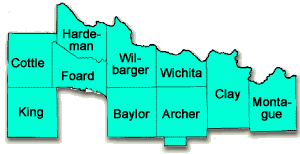Region B
2001 Regional Water Plan Overview

Basic Plan Facts
- Region expected to experience only a low population growth by 2050
- Total capital cost of proposed water supply measures: $145 million
- No new reservoirs proposed
What's at Issue?
The 2001 regional plan projects that all water demands in the region will be met through 2050. However, there are water needs in the region that were not accounted for in the planning process. Environmental water flows are integral to protecting the natural resources of this region, and constitute a true demand for water. The area's natural resources include numerous natural springs, and the region is home to at least five endangered bird species: whooping crane, bald eagle, interior least tern, black-capped vireo, and golden-cheeked warbler.
Action Items
Here are some of the items the Region B Planning Group must address.
 Conservation and Drought Management
Conservation and Drought Management
For conservation and drought management, the plan needs to...
- Assess current levels of municipal water conservation and recommend advanced measures.
- Consider irrigation water conservation like installing pipelines or lining canals to reduce transmission losses or installing more efficient irrigation systems such as drip irrigation or the most efficient forms of center pivot systems. For example, the Wichita County Water Improvement District canals experience a 44% conveyance loss. The plan finds that lining the canals would be too costly at $25 million. Such a high rate of water loss, however, should provide incentive for creative funding efforts.
- Include regional drought contingency planning. The 2001 regional plan assumes that water providers will develop individual plans.
 Environmental Flows
Environmental Flows
To secure the protection of flows for fish and wildlife, the plan needs to...
- Undertake an evaluation of environmental water needs, and acknowledge and discuss environmental impacts of all water supply strategies.
- Include a discussion of water quality threats to natural resources. Reduction in flows can worsen existing water quality problems by reducing the dilution of pollution.
- Discuss how proposed projects will affect the springs in the region.
- Designate stream segments in the region that meet the criteria as having "unique ecological value". No segments were designated in the 2001 regional plan. The Texas Parks and Wildlife Department recommends 3 segments for designation in this region.
 Economics
Economics
To ensure that only the most economically sound water supply strategies are implemented, the plan needs to...
- Compare the costs and benefits of the supply alternatives in a consistent and reasonable manner.
Additional Resources
- TWDB Regional Water Planning Website
- The 2001 Region B Water Plan
- Region B's Website
Analysis
The National Wildlife Federation analyzed the initially prepared plan using their Principles for an Environmentally Sound Regional Water Plan. Please contact us for more information about this analysis.



 Region B
Region B